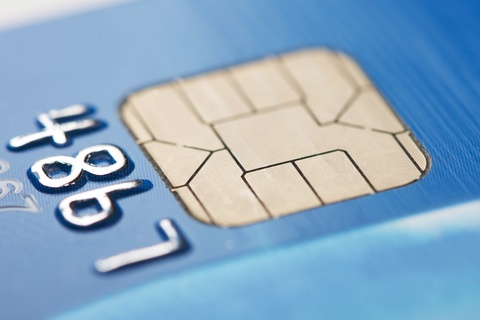A Few Questions Answered about RMS’ New EMV Solution
Last week, RMS announced release of a single hardware solution for EMV card acceptance and signature capture with Vantiv Payments. We have been...
Co-authored by RMS Director of Training Services, Brandon Bieleski Since the formal EMV liability shift in Oct 2015, some merchants have experienced an increase in fraudulent EMV related chargebacks. With RMS’ release of EMV certification on the Ingenico isc250 signature capture pad via Vantiv Integrated Payments, the question of the moment is whether the risk […]
 Co-authored by RMS Director of Training Services, Brandon Bieleski
Co-authored by RMS Director of Training Services, Brandon Bieleski
Since the formal EMV liability shift in Oct 2015, some merchants have experienced an increase in fraudulent EMV related chargebacks. With RMS’ release of EMV certification on the Ingenico isc250 signature capture pad via Vantiv Integrated Payments, the question of the moment is whether the risk involved with being liable for EMV related chargebacks is high enough to justify the cost for new hardware, capable of processing EMV transactions. To answer that question, you’ll need a firm understanding of what chargebacks are, why they happen and what you can do about them.
Much more often than not, chargebacks are legitimate and can be easily explained by the verbiage associated with the chargeback code. In general, these are chargebacks that likely would have occurred in the past, but prior to the liability shift, were handled on the bank side. Now that that liability has formally moved to the merchant, it’s the merchant who is having to deal with them.
We have had reports of merchants receiving chargebacks that they feel might be prompted by the cardholder’s bank – chargebacks issued simply for accepting an EMV card at a mag-stripe terminal. This is an easy misconception often generated by the verbiage on the chargeback code. However, banks are unable to issue chargebacks of their own decision using these EMV liability shift codes. In all cases of chargebacks that we have investigated, they are either legitimate or instances of “friendly fraud.”
Friendly fraud is a term used to describe a cardholder completing a transaction using their own credit or debit card, and then illegitimately contacting their issuing bank to reverse the charges. The resulting chargeback takes place after the cardholder has received the goods/services, which results in a loss for the merchant.
In all of this, there is some good news for merchants not yet enabled to process EMV transactions. Per this recent announcement from Visa, “Beginning July 22nd, 2016, chargebacks for counterfeit fraud for transactions under $25 will be blocked – meaning issuers will have the liability for this fraud. This is a temporary change that will expire in April 2018.” Although this does help to mitigate some of the risk for merchants, you’ll still maintain liability for fraudulent transactions above that $25 limit.
Now that the liability is on you, the merchant, it is your responsibility to protect yourself during a transaction. If you think you experience an illegitimate or fraudulent chargeback, contact your bank, processor or local law enforcement. If something seems fishy to you, investigate it. Here are some quick tips on preventing and researching chargebacks.
Ultimately the best way to protect your business from EMV chargebacks is to implement an EMV acceptance solution. We’re happy to answer any questions you have about the solutions we have available today and what’s coming next.
Last week, RMS announced release of a single hardware solution for EMV card acceptance and signature capture with Vantiv Payments. We have been...
When I was a kid, I used to watch Wheel of Fortune every night without fail. I loved solving the puzzles and trying to fill in the blank with as few...
EMV continues to be a dominant concern for many RMS customers. As we work towards release of our EMV solution there’s not much new to share, so in...
Be first to know about new blog posts, special announcements, product launches, upcoming events, CLIMB content, and more from your favorite pharmacy POS partner.